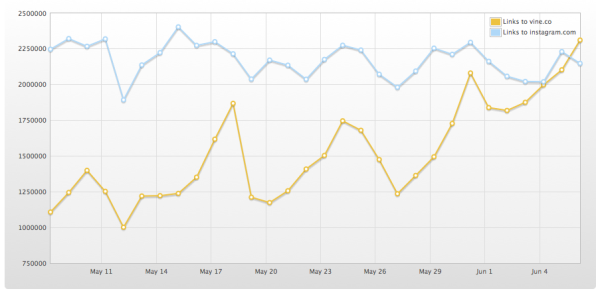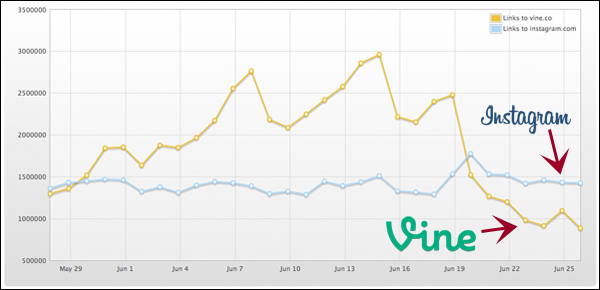1432 words | ~7 min
Update: Since I wrote this, the merger has collapsed.
Disclosure: I work for a company in which WPP has a financial stake, and am a former WPP Marketing Fellow. All opinions are my own.
As more or less everyone in advertising and marketing now knows, Omnicom and Publicis today announced that they are merging, forming what's set to be the world's largest marketing services holding company.
As the New York Times notes, the CEOs of the two companies paid the customary homage to big data when talking about the benefits they expected such a huge merger to deliver:
“The communication and marketing landscape has undergone dramatic changes in recent years including the exponential development of new media giants, the explosion of Big Data, blurring of the roles of all players and profound changes in consumer behavior,” he [Mr. Lévy] said. “This evolution has created both great challenges and tremendous opportunities for clients. John and I have conceived this merger to benefit our clients by bringing together the most comprehensive offering of analog and digital services.”
At the news conference, he expanded on that notion. The “billions of people” who are now online and providing data to companies,” Mr. Lévy said, provide an opportunity to use advertising technologies to “crunch billions of data in order to come with a message which is relevant to a very narrow audience.”
I'd suggest this should be taken with a pinch of salt. To some extent this is the sort of talking-up you'd expect from any company latching on to fashionable industry concepts to enhance its future share price, and good on them for doing that. But it does raise some interesting questions about the relationship between holding companies and big data.
Whose data is it anyway?
It's worth remembering that this data is not - or should not be - a strategic asset for Publicis/Omnicom. The data is collected on behalf of, and should be owned by, its clients.
Clients may find themselves with a bigger menu of marketing services options as a result of this merger. It remains to be seen to what extent these are powered by data, or whether the newly-merged holding group will do a good job of helping clients join data together and break down operational walls so they can make more effective use of their data.
Finally, this will come down to a question of what clients want - and it is likely to be more driven by clients than any holding company wants to admit. At the moment, I see no reason to believe that clients will want to deal direct with holding companies for their data management services. They will expect their agency partners to provide data in common formats, be more open about data sharing and act faster on opportunities found in data; but they may not want their data management platforms provided by their agencies, or even their holding companies. It's good if Publicis/Omnicom adopt and enforce common data openness standards across all their agencies, because it will make it faster and easier to access, integrate and audit. But the agenda will be set by clients, who will want the data provided by those agencies to play nicely with data from all other sources, regardless of source.
The awkward matter of scale
Holding companies have a bad rep. For small agencies, positioning themselves as the 'hot shops' in contrast to the lumbering industry giants is a pretty easy win. There's a nagging doubt - which clients clearly share to some extent, and perhaps rightly - that dealing with a big agency or group is a recipe for cookie-cutter work or grindingly slow bureaucratic ways of working.
Big data has provided a way for holding companies to talk unashamedly about scale. A few years ago, media planning and buying provided a similar opportunity. This time round there was far more talk of data than of media, which implies that data is currently a more fashionable and persuasive way of implying 'value through scale'. This was backed up by plenty of talk of efficiency savings too.
What's missing, for me, in a lot of this rhetoric, is any mention of creative pride in the scale that big data provides. I've yet to hear a holding company come out and say that, yes, having tons of data and making a lot of it can lead to more focused strategies, more interesting creative opportunities, better briefs, fewer things done on a whim, fewer lazy assumptions. I know from experience that some holding companies value these things highly. Mine (WPP) was awarded as most effective holding company at Cannes for the third year in a row. But it would be great to hear holding companies come out and say that being huge, and having better data resources, gives advertisers more scope to be fast, focused, and fearless.
From big data to marketing coordination
Speaking of scale, people say some stupid things about big data. One of the stupidest is, 'Big data's not about how much data you've got, it's about what you do with it.'
No, big data is explicitly about how much data you've got. Of course, the utility value of data is also an important characteristic (duh). But let's not pretend that volume, timeliness and granularity of data aren't also decisive. My view is that if you don't value the scale of your data, you're doing it wrong.
This thoughtless utterance, though, is simply a bad articulation of a very important insight: that at the moment data is typically being used at the wrong points throughout the advertising planning and execution process. Everybody with a bit of common sense in marketing knows this, and could tell you where and when they want to use data more - when identifying specific challenges and opportunities, when taking the temperature of an issue and figuring out a response in real time, when measuring and adapting the performance of creative content mid-stream during a campaign, and when measuring the relationship between short-term activity and long-term brand value and behavioural change.
This stuff is hard, and a lot of it won't be sorted out for several years. But most of the difficulties aren't theoretical ones. There's plenty of chatter about what big data could do - the possibilities, the opportunities, the brilliance of theory. But very few of the pundits are really doing it, and doing it in ways that scale up and let you do it quickly and repeatably and every single day, without going insane.
Doing it well does mean more than having data. But hidden under the banner of 'what you do with it' is, I think, a complete reconfiguration of how marketing works, and how agencies work together. As we all know, clients are demanding more for less - more efficiency, more speed, and more transferability. International clients, in particular, want ideas that travel well, assets that can be localised but that are basically globally consistent. As creative agency people we can tend to rebel against this, because our instinct is to assume that marketing strategy and creative advertising development necessarily sit very close together. And we tend to see all the bits of the industry that are more replicable or scalable - research, media, analytics, production, adaptation - as a bit Luddite-ish.
Unless there's an astonishing creative revolution (which seems unlikely in the current climate), that way of thinking needs to change fast. If clients want fast, replicable, measurable work, then as people who care about long-term effectiveness and creative difference, we need to find ways to give it to them. That means taking a deep breath and bringing together strategy, creative and production in new combinations, working data seamlessly throughout that process, and using technology and information to make sure we can measure short-term effects and predict long-term ones. Call it marketing coordination if you like. And yes, we'll need to find the right balance between creative speed and quality of craft, and know - as ever - where to focus our efforts and battles to fight.
So we can stop talking about what big data could do, and just get on with doing amazing work every day.

